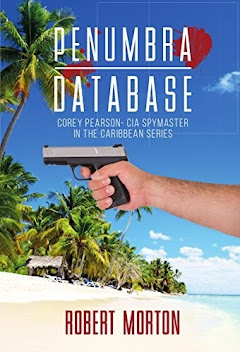 |
| Reflections of Sacrifice: Honoring the Past, Remembering the Fallen |
It’s just a wall. Just a long stretch of
polished black granite, cut into the earth like a wound that never quite
healed. But for those who visit, for those who run their fingers over the
names, it is so much more.
Fifty-eight thousand two hundred
sixty-seven names. Each one represents a life—a son, a father, a brother, a
friend. Some were barely more than boys. The largest age group on the Wall is
18 years old—33,103 of them. There are 8,283 who were only 19, and 39,996 who
were 22 or younger. Twelve were just 17. Five were 16. PFC Dan Bullock was only
15.
The first name etched into the stone
belongs to Richard B. Fitzgibbon of North Weymouth, Massachusetts. He was
killed in 1956—years before the war even became official. His son, Marine Lance
Cpl. Richard B. Fitzgibbon III, would follow him in death nearly a decade
later. Their names rest together on the Wall, a cruel legacy no family should
have to bear.
And they weren’t the only ones. There are
three sets of fathers and sons here. Thirty-one sets of brothers. Thirty-one
families who had to bury not one, but two of their children.
For some towns, the war took more than its
share. Beallsville, Ohio, with a population of just 475 people, lost six of its
sons. In West Virginia, the losses hit even harder—711 names on the Wall,
giving the state the highest casualty rate per capita in the nation. Then
there’s Thomas Edison High School in Philadelphia, which lost 54 former
students. Fifty-four young men who once walked the same halls, sat in the same
classrooms, joked about their futures—gone.
Then there were the ones who went
together. The Marines of Morenci, nine best friends from a small mining town in
Arizona, enlisted as a group on Independence Day, 1966. They had been athletes,
hunters, young men full of life. By the time the war was done, only three
returned.
In Midvale, Utah, LeRoy Tafoya, Jimmy
Martinez, and Tom Gonzales had been childhood friends, growing up on the same
streets, playing ball on the same dusty lots. They went to war together, and in
the span of just 16 days, all three were gone. LeRoy was killed on November 22,
1967, the anniversary of JFK’s assassination. Jimmy followed less than 24 hours
later, on Thanksgiving Day. Tom died on December 7, Pearl Harbor Remembrance
Day.
War has a way of making the numbers seem
cold, like statistics in a history book. But the veterans, the families, the
ones who lived through it, they don’t see numbers. They see faces. They hear
voices, laughter, the way their friends walked or the way they used to roll
their sleeves just so. They remember the ones who never got to grow old.
Some never even got a second chance- 997
soldiers died on their first day in Vietnam. 1,448 died on what was supposed to
be their last. Some were just days or even hours away from going home when
their names were sealed in history.
And then there are the eight women on the
Wall. Nurses who didn’t carry rifles but carried the wounded. Who held hands,
whispered reassurances, and watched too many young men slip away under their
care.
Some acts of bravery were recognized with
the highest honor. 244 soldiers were awarded the Medal of Honor for their
actions in Vietnam. 153 of them never made it home.
The deadliest single day of the war was January
31, 1968—245 deaths in one nightmarish stretch of hours. The worst month was
May of that same year, with 2,415 casualties. A single month of loss, written
in stone, stretching across the Wall.
For those who visit, it isn’t just a list
of names. It’s a reminder of sacrifice, of youth lost, of futures stolen. For
those who served, it’s a place to find old friends. To trace letters with
shaking fingers and whisper apologies, or just stand in silence and remember.
And for the families—the parents, the
children, the brothers and sisters—it is a place to feel close again, if only
for a moment.
There are no noble wars. Only noble
warriors.
Robert Morton is a member of the Association of Former Intelligence Officers (AFIO) and an accomplished author. He writes the Corey Pearson- CIA Spymaster Short Story, blending his knowledge of real-life intelligence operations with gripping fictional storytelling. His work offers readers an insider’s glimpse into the world of espionage, inspired by the complexities and high-stakes realities of the intelligence community.





No comments:
Post a Comment